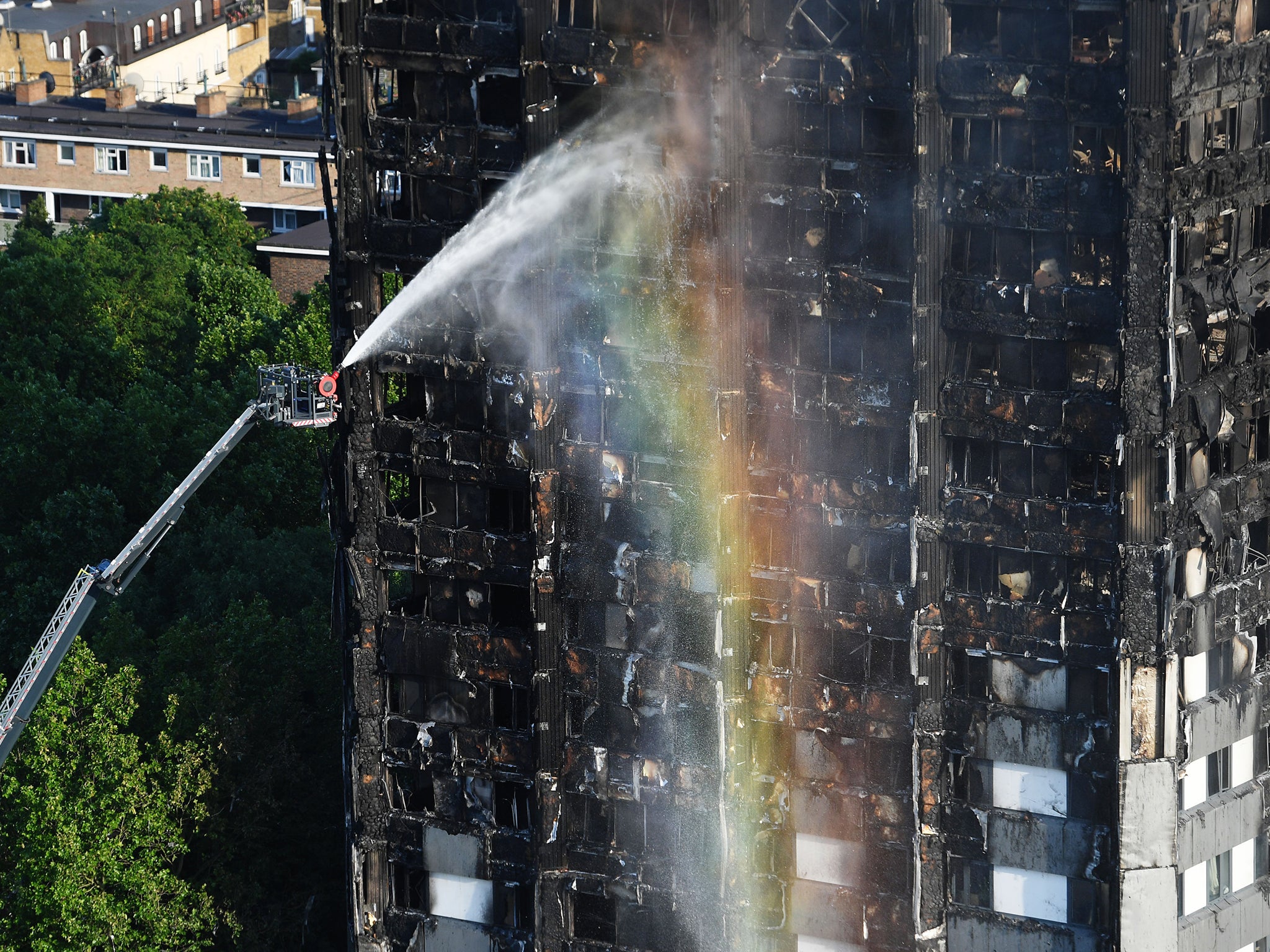Grenfell Tower: London Fire Brigade 'buying aerial ladders that could have reached block's upper floors'
Exclusive: Crews’ efforts to halt the spread of the Kensington blaze were hampered by a series of equipment failings on the night

Your support helps us to tell the story
From reproductive rights to climate change to Big Tech, The Independent is on the ground when the story is developing. Whether it's investigating the financials of Elon Musk's pro-Trump PAC or producing our latest documentary, 'The A Word', which shines a light on the American women fighting for reproductive rights, we know how important it is to parse out the facts from the messaging.
At such a critical moment in US history, we need reporters on the ground. Your donation allows us to keep sending journalists to speak to both sides of the story.
The Independent is trusted by Americans across the entire political spectrum. And unlike many other quality news outlets, we choose not to lock Americans out of our reporting and analysis with paywalls. We believe quality journalism should be available to everyone, paid for by those who can afford it.
Your support makes all the difference.London Fire Brigade (LFB) are in the process of buying aerial ladders that may have been able to reach the upper floors of Grenfell Tower.
Appliances currently held as part of the service’s stock of equipment only reach up to 32m – at least 30m short of the higher floors of the 24-storey block that was ravaged by fire in 2017.
The new higher ladders will allow the service to mitigate a “wider operational risk base”, according to LFB safety director, Steve Apter, speaking on behalf of fire commissioner Dany Cotton.
Mr Apter said he hoped to procure equipment that could reach up to 22 or 23 floors high.
Only two people from the 23rd storey of the block – the top floor – survived. At least 48 others from floors 19, 20, 21, 22 and 23 died.
Crews’ efforts to halt the spread of the Kensington blaze, which claimed 71 lives, were reportedly hampered by a series of equipment failings on the night.
A high ladder, which could have reached the 10th floor, was not dispatched until 24 minutes after emergency services arrived on scene, according to an incident mobilisation list seen by the BBC, which experts said could have allowed the service to contain the fire if it had arrived earlier.
LFB confirmed after the tragedy a high ladder will now automatically be sent to a fire in a tower.
Mr Apter said the decision to bring in new equipment was informed by lessons taken from the tragedy and from “understanding and knowing risk”.
“Those extended height appliances have a far wider range of operational use, from rescue platforms to firefighting platforms, observation platforms, they can lift. So it’s a really wide ranging use of equipment and they would give us a wider resilience for a wider operational risk base,” he said at a mayoral budget scrutiny meeting at City Hall.
“Some of the ones we are currently looking at can reach up to 22 or 23 floors in a high-rise so they are considerably extended in their capabilities than currently.”
Mr Apter said the time frame for the procurement process was still unclear but he hoped to have acquired the new equipment by the end of 2018/19 or early 2019/20.
The brigade currently uses two main types of aerial appliance: The aerial ladder platform (ALP) and the turntable ladder (TL). The existing operational fleet consists of four TLs and seven ALPs, plus four ALPs used as reserve appliances. Turntable ladders have a reach of 32 metres. Aerial ladder platforms have a reach of 30 metres.
A spokesperson for the service said the plans would see five new appliances added to the brigade’s stock of 15.
“In March 2017 the brigade announced plans to upgrade and replace its existing fleet of 15 aerial appliances. In July, as part of a review into the brigade’s resources requested by the Mayor, the Commissioner said it would be beneficial to incorporate up to five extended height aerial appliances into that fleet of 15,” a spokesperson said.
“Exactly which aerial appliance the brigade would benefit from is still being reviewed. The final decision will take into account the range of crucial tasks aerial ladders perform at incidents which include providing high level lighting, for use as observation platforms and as a way of delivering water from height onto a fire. It should be noted that fires in high rise buildings are usually fought internally which is why the building’s fire safety measures are so crucial and why the longest ladders available are rarely the most effective way of responding. Rescues from fires in high rise premises are almost always undertaken by firefighters working within the building.”
It comes some weeks after an interim report into fire safety delivered a damning indictment of the UK’s building regulations.
Dame Judith Hackitt, the chair of the independent review, said the law was “not fit for purpose” and allowed contractors to abuse the system.
The causes of the fire in West London will be determined by a public inquiry that is currently underway, but fire safety experts widely condemned the tower’s single staircase design and the lack of sprinklers in the building in the fire’s aftermath.
Combustible plastic foam insulation and cut-price aluminium panels with a polyethylene core fitted to the block have also been blamed for the rapid spread of the fire.
The Government said it accepts all of the report’s recommendations.
Join our commenting forum
Join thought-provoking conversations, follow other Independent readers and see their replies
Comments